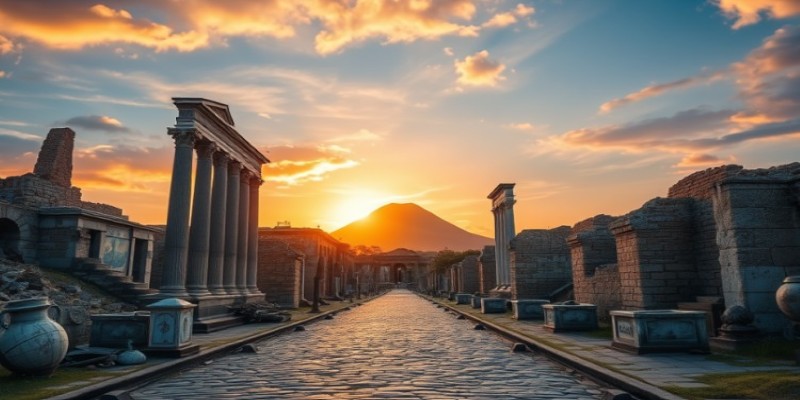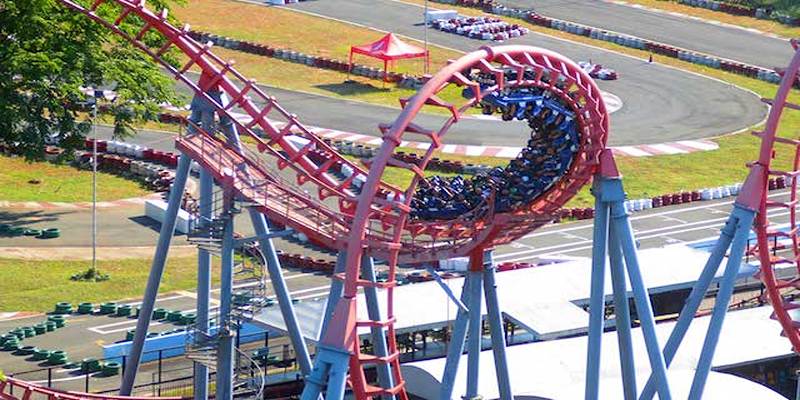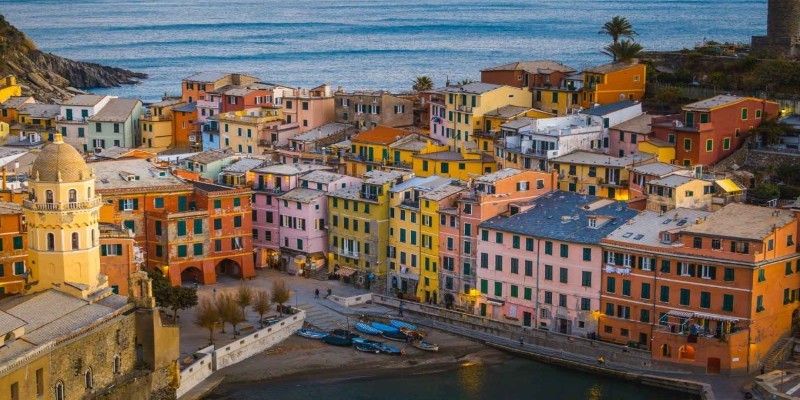Make the Most of Your Day in Pompeii: A Perfect Itinerary
Pompeii is a city frozen in time, offering an unparalleled glimpse into the daily lives of ancient Romans. Given its vastness and cultural significance, Visiting Pompeii for just one day may seem overwhelming, but with a well-structured plan, it's possible to enjoy its highlights and leave with unforgettable memories.
From the hustle and bustle of streets to the surprisingly preserved ruins, Pompeii transports you to a world that met an untimely end yet lives on as testimony to resilience and history. In this guide, we walk through the perfect one-day Pompeii itinerary to give you a slice of this fabled archaeological wonder.
Morning: Starting Your Pompeii Adventure
To make the most of your day in Pompeii, start early. That way, not only will you avoid the hordes of visitors, but you will also get enough time to explore the attractions at your leisure. Start with the Porta Marina entrance, one of the main gateways to the ancient city. This spot provides a dramatic introduction to the grandeur of Pompeii, with views of Mount Vesuvius looming in the distance.
Inside, head straight to the Forum—the heart of political, social, and religious life in ancient Pompeii. Significant structures surround it, like the Temple of Jupiter, the Basilica, and the Macellum marketplace, which provides a pretty close picture of Roman civic life. Envision all the lively debates, trading activities, and religious ceremonies that once animated this space.
From the Forum, make your way to the nearby Stabian Baths, one of the oldest and most well-preserved bathhouses in Pompeii. The intricate mosaics, changing rooms, and heating systems provide fascinating insights into Roman leisure culture. These early stops laid the foundation for understanding the sophistication of Roman engineering and society.
Midday: Exploring Pompeii’s Hidden Gems
By midday, venture into the residential areas to witness the private lives of Pompeii’s citizens. The House of the Faun, named after the bronze statue adorning its courtyard, is a must-see. This sprawling villa showcases exquisite mosaics, including the famed Alexander Mosaic, which depicts a historic battle scene. The artistry and grandeur of this home highlight the wealth and taste of Pompeii’s elite.

Next, visit the Lupanar, a small but intriguing structure that served as a brothel. Its preserved frescoes and inscriptions provide a glimpse into the more intimate and less glamorous aspects of Roman life. While exploring, be mindful of the emotional weight these spaces carry, as they remind us of the humanity and complexity of ancient societies.
If time allows, the Villa of Mysteries, located just outside the main city walls, is worth the short detour. Known for its vibrant frescoes depicting enigmatic rites, this villa adds an air of mystery and sophistication to your visit. The artwork here is so vivid that it feels as though it were painted yesterday, offering a deeply immersive experience.
Afternoon: Capturing Pompeii’s Grandeur
After lunch, it's time to dive into Pompeii's grand public spaces and entertainment venues, where you can truly feel the vibrancy of ancient Roman life. Begin with the Amphitheater, one of the oldest and best-preserved arenas in the Roman world. This impressive structure could hold up to 20,000 spectators, making it one of the largest amphitheaters of its time. As you walk through its vast arches and across the arena’s stone floor, you’ll be transported back in time to the gladiatorial games that once filled this space with cheers and anticipation. You can almost imagine the fierce battles and the intense emotions that would have erupted here.
Next, visit the Large Palaestra, located just next to the Amphitheater. Unlike the energetic atmosphere of the arena, the Palaestra offers a tranquil space with open courtyards surrounded by columns. This gymnasium was used for athletic training and social gatherings, a place where Pompeiians came together to exercise and socialize. It's a great place to appreciate how the Romans balanced physical activity with social life, reflecting their love for both leisure and community.
Finish your afternoon at the Theatre District, home to both the Great Theatre and the Odeon. These venues were the heart of Pompeii's cultural life, hosting everything from dramatic performances to musical events. As you sit in the stone seats of the Great Theatre, you’ll feel a powerful connection to the crowds who once gathered here to enjoy the arts, just as we do today.
Evening: Relaxing and Reflecting on Your Pompeii Day Trip
As the sun begins to set, take a moment to slow down and reflect on your Pompeii day trip. There’s a special magic in the evening light as it casts long shadows across the ruins, offering a different perspective on the city. Head to the Villa of the Mysteries or another quieter area within Pompeii and take in the surroundings at a leisurely pace.

This is also the perfect time to visit some of the smaller, less crowded sites, like the House of the Tragic Poet or the Garden of the Fugitives. Here, you'll find preserved casts of the eruption victims. These poignant reminders of the eruption’s devastation will leave you with a deeper understanding of Pompeii’s tragic yet fascinating story.
Conclusion
As you conclude your Pompeii adventure, take a moment to appreciate the extraordinary history you've witnessed. Pompeii's ruins, preserved by the eruption of Mount Vesuvius, offer a unique window into ancient Roman life. From the bustling Forum to the quiet residential homes, every corner tells a story of resilience and tragedy. Whether exploring grand amphitheaters or intimate spaces like the Villa of Mysteries, you’ve experienced a rich tapestry of history. Your visit may end, but the memories of Pompeii, with its beauty and profound historical significance, will stay with you long after you leave its gates.












